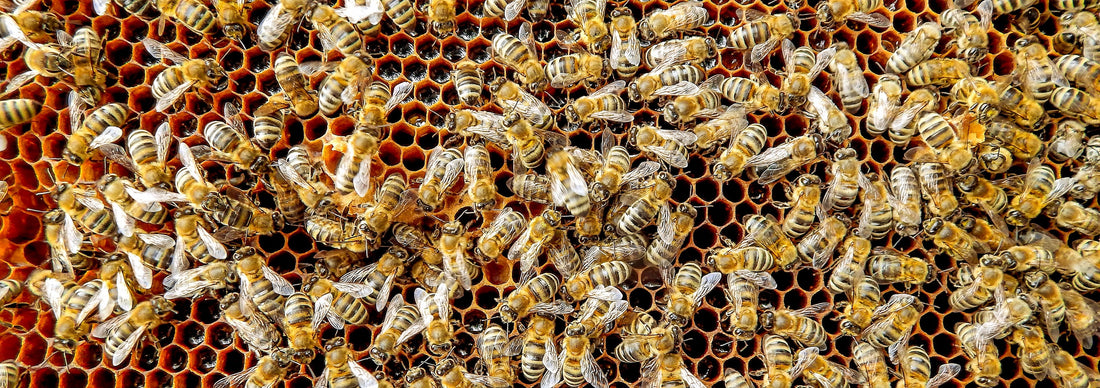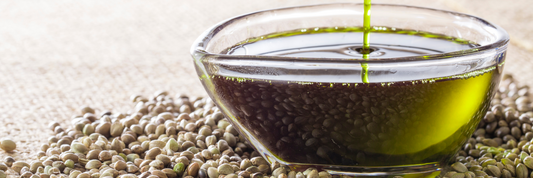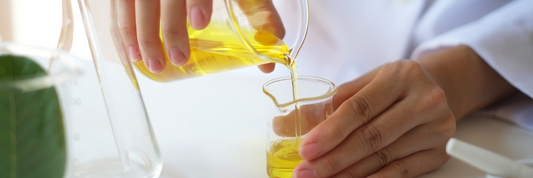
How To Use Beeswax
All about Beeswax
What is Beeswax?
Beeswax is produced by honeybees who use it to form the cells that make up their hives. These intricate cells are used as protective housing for bee larvae, storing honey and more.
Chemically, Beeswax is comprised of esters, fatty acids and long chain fatty alcohols. It is brittle at cold temperatures, becomes malleable once above room temperature and melts at 62 – 64°C.
Traditional uses of Beeswax
Beeswax has been used by humans for thousands of years. The way in which is has been used are almost as numerous too, ranging from art and sculpture through to cosmetics and medicine. Before the invention of Paraffin wax in the 19th Century, there really was not a substance that could replace the unique properties and versatility of Beeswax so it’s importance in history cannot be understated.
How to use Beeswax
In skincare, beeswax is used for is occlusive effect, eg it creates at protective layer on top of the skin stopping it from drying out – think lip balms and calendula/kawakawa balms. It can also be used to make beeswax candles, which are said to act as an air purifier. Over recent years beeswax food wraps have become a very popular as an alternative to plastic food wrap.
Different types of Beeswax
Here at PureNature we have 5 different types of Beeswax:
Beeswax, Yellow (New Zealand) – Our go to for anything skincare and candles, smells delicious.
Beeswax, White (New Zealand) – Use for anything skincare and candles where a white colour and a milder smell if desired.
Beeswax, Yellow, Organic (New Zealand) – Same as above, but bio-gro organic certified.
Beeswax, Yellow (Africa) – A cheaper beeswax, our go to for beeswax wraps.
Beeswax, White (Africa) – A cheaper beeswax, no smell, our go to for beeswax wraps.
Let us look at 10 fun ways to use Beeswax.!
- Make a beeswax wrap! Beeswax wraps are an eco-friendly alternative to plastic cling film. Easy to make and a fun project for the kids to get involved in, find our recipe here, or try our DIY set here.
- Condition a wooden chopping board! Keep your chopping boards, wooden spoons and other wooden items protected and loved. Melt 15gms of beeswax into 85gms of Food Grade Mineral Oil and leave to set, apply this balm with a clean cloth. This could work for wooden furniture too.
- Make your own Lip-Balm! Beeswax is conditioning for your lips and locks in moisture. Try this simple recipe here or get out DIY Lip Balm Kit which comes with everything you need to make ten lip balms including an organic lip balm flavour oil.
- Make a beeswax candle! The beautiful thing about a beeswax candle is you do not have to use fragrance because it smells divine just by itself.
- Waterproof and condition your leather shoes and bags! Make up a leather conditioning balm by melting equal parts beeswax, castor oil and shea butter, let it set and you have got a beautiful nourishing and waterproofing leather balm.
- Add it to soap! Beeswax can help harden a bar of soap and make it last longer, add up to 5% to your cold process soap recipe.
- Make a Batik! Batiking is a method of fabric dyeing in which the fabric not intended to be dyed is covered with removable wax. The ideal mixture for batik preparation is 30 percent beeswax and 70 percent paraffin, creating the perfect batik wax mixture.
- Prevent rust! Coat things like hand tools, cast iron pieces and shovels to prevent them from rusting out. You can even rub beeswax on the wooden handle of your shovel to help protect against wear and tear.
- Wood lubricant! Rub beeswax on sliding windows or drawers that tend to stick and restore smooth movement.
- Make Beeswax crayons! Melt beeswax and cocoa butter in equal parts. Whisk in micas, oxides or natural pigments (turmeric, spirulina, charcoal, beetroot, clay powders etc) and pour into a crayon mould to set. Pop them out when hard and you have a totally natural crayon for the kids.





















